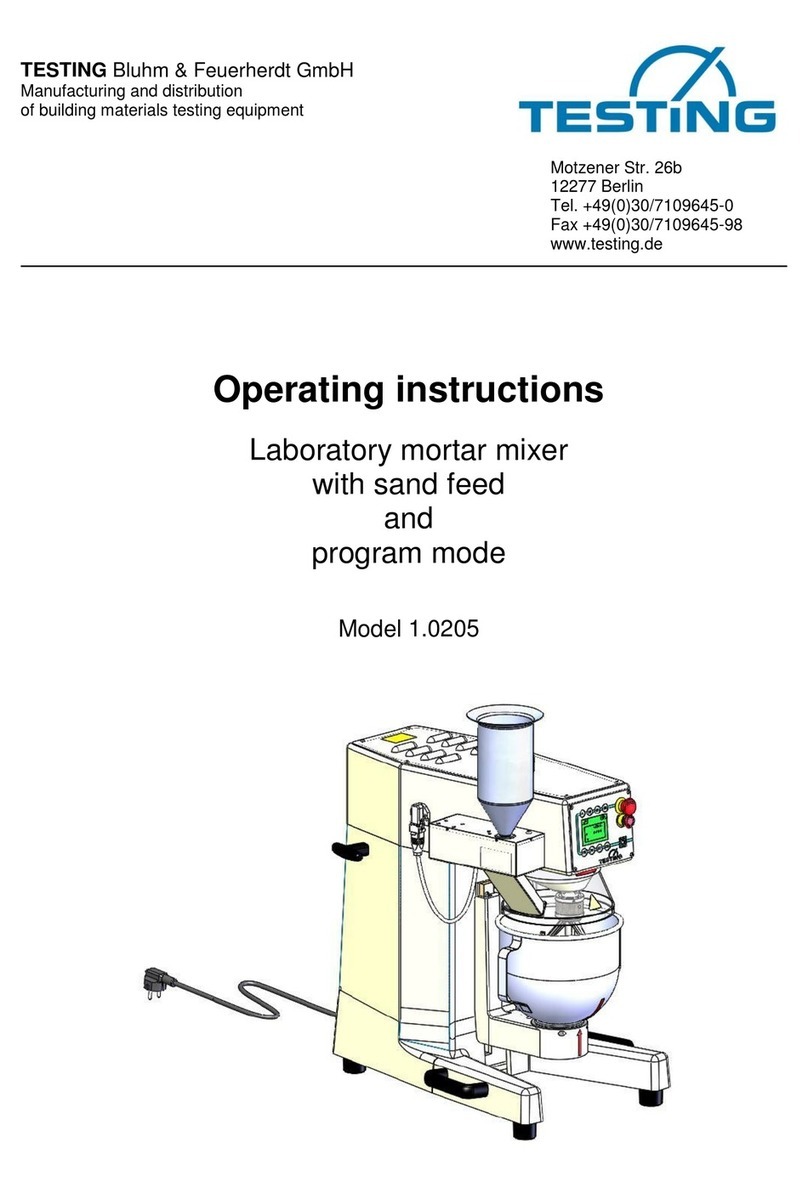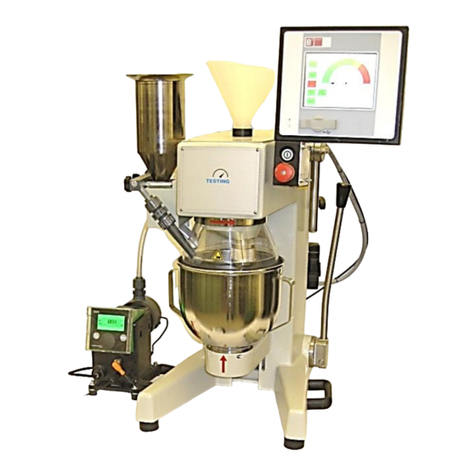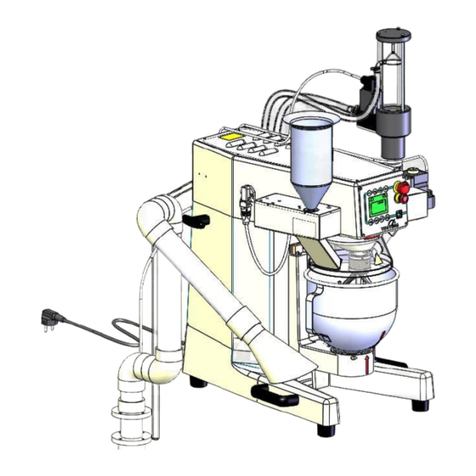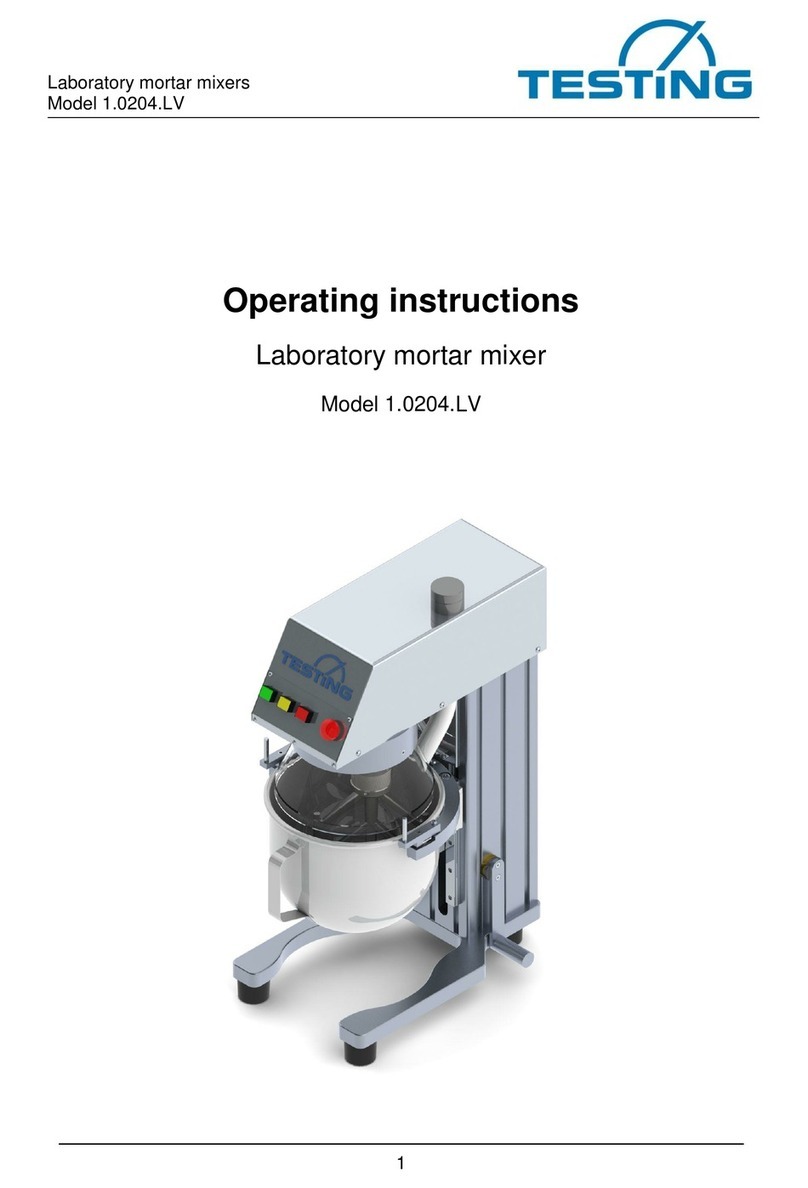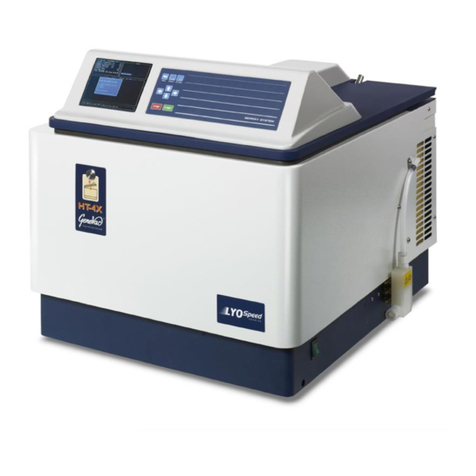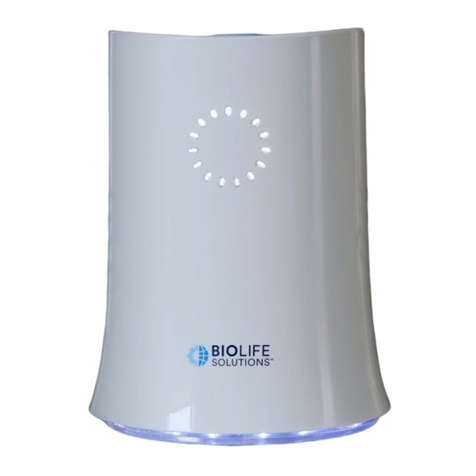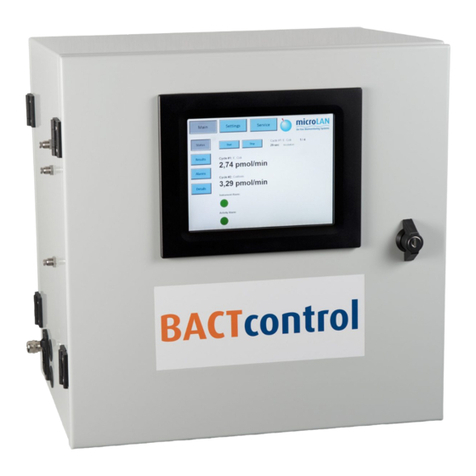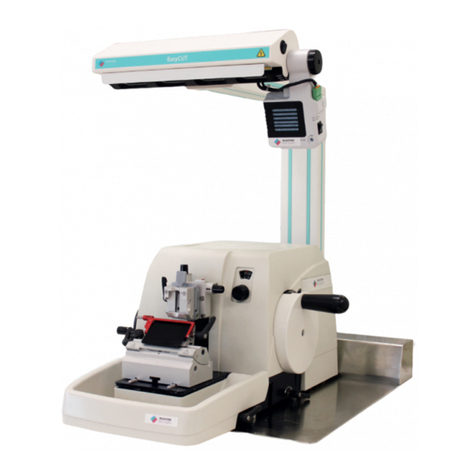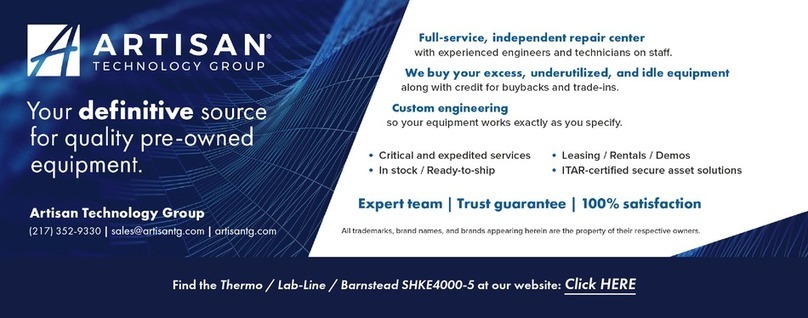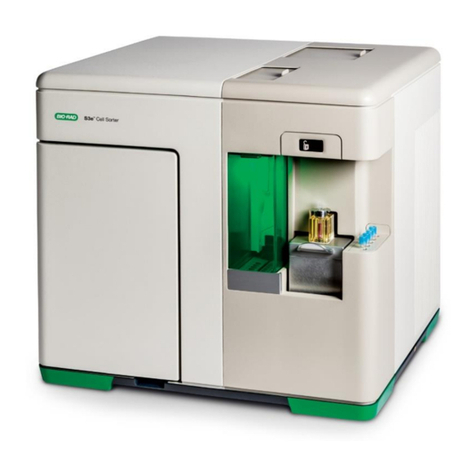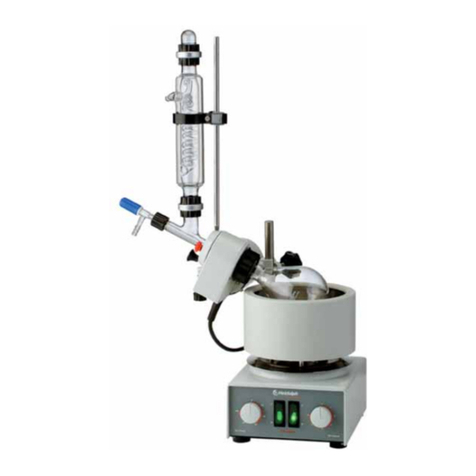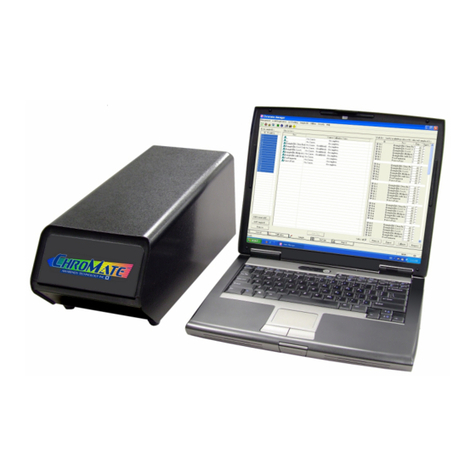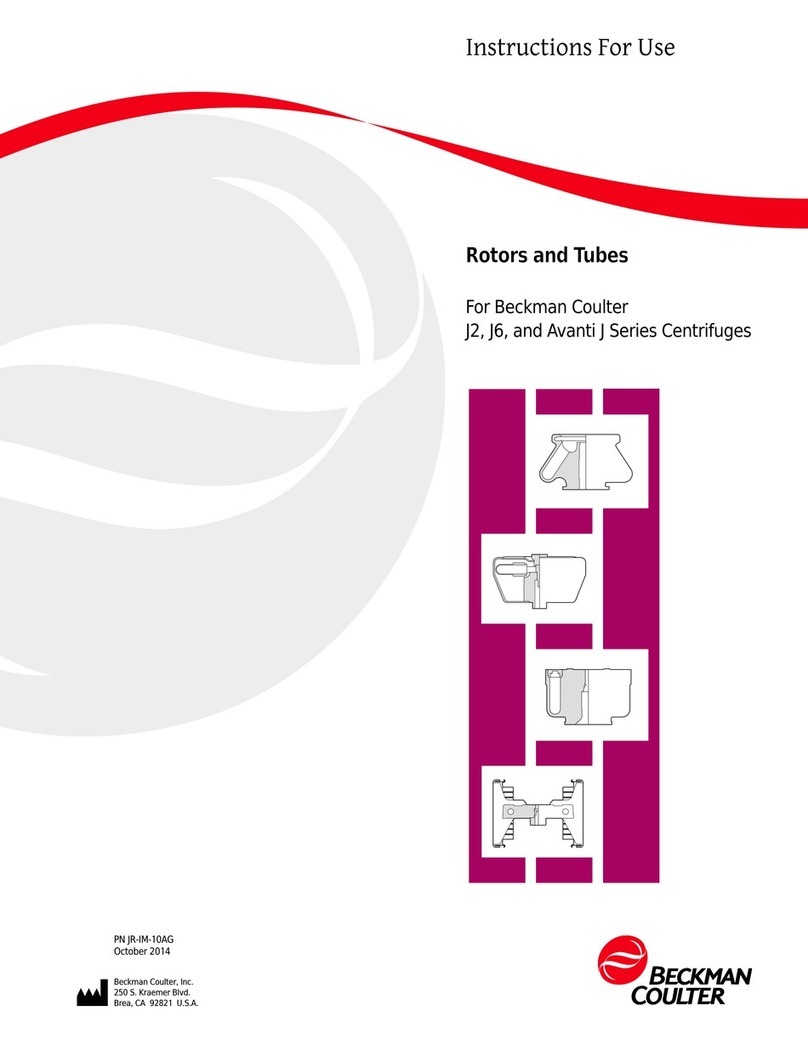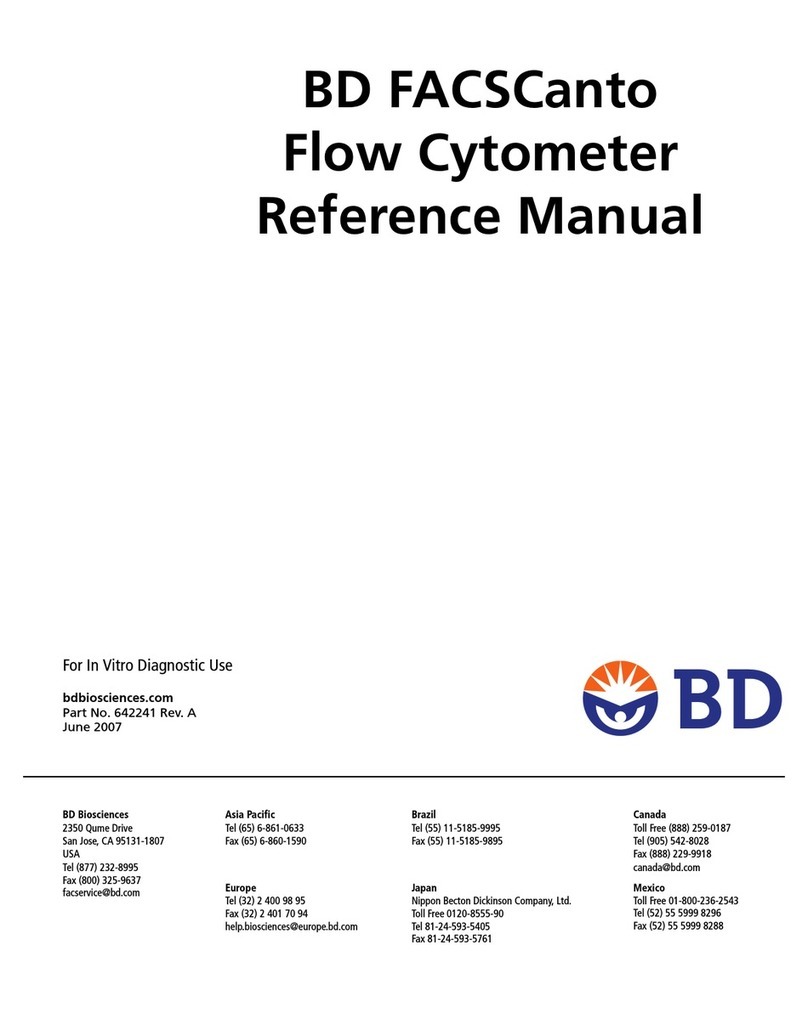TESTING 1.0330 User manual

TESTING Bluhm & Feuerherdt GmbH
Production and distribution of
construction-material testing devices
Motzener Str. 26b
DE - 12277 Berlin
Tel. +49(0)30/710 96 45-0
Fax +49(0)30/710 96 45-98
www.testing.de
1
Operating Manual
Cabinet for Moist Storage
of Mortar Prisms in Triple Moulds
In accordance with EN 196

Cabinet for Moist Storage
of Mortar Prisms in Triple Moulds
1.0330
2
CAUTION: Do not place this device into operation until you have made yourself fully ac-
quainted with its connection, with its function, and with the position of all its control ele-
ments and functions.
Contents Page:
1. Basic instructions ..................................................................................................3
1.1 Designation.................................................................................................................3
1.2 Purpose for which this system was designed..............................................................3
1.3 Conditions under which this system may NOT be used...............................................4
1.4 Guarantee...................................................................................................................5
1.5 Safety instructions.......................................................................................................5
1.6 Acceptance of delivery and transport..........................................................................6
1.7 Setting up the Cabinet.................................................................................................7
2. Placing the Cabinet into operation .......................................................................7
2.1 General information ....................................................................................................7
2.2 Humidifier....................................................................................................................8
2.3 Connection to the power supply..................................................................................8
2.4 Switching on the Cabinet ............................................................................................9
3. Characteristics of the system .............................................................................10
3.1 General description of the system.............................................................................10
3.2 Technical data ..........................................................................................................10
3.3 Open- and closed-loop control equipment.................................................................12
3.3.1 Messages and warnings on the display.................................................................14
3.3.2 Calibration of the display value..............................................................................14
3.4 The humidification system.........................................................................................15
4. Maintenance, care, and cleaning of the system ................................................16
4.1 General instructions..................................................................................................16
4.2 Care of the indicator instruments ..............................................................................17
4.3 Care of the humidifier................................................................................................17
5. Troubleshooting...................................................................................................18
5.1 Status and error messages on the controller.............................................................18
5.2 General troubleshooting............................................................................................18
6. Placing the system out of operation...................................................................19
7. Scrapping the system..........................................................................................19
8. After-sales service ...............................................................................................20
8.1 Date of this version of the Operating Manual ............................................................20
8.2 Copyright ..................................................................................................................20
8.3 Spare parts and technical help..................................................................................20
Attachments:
Declaration of conformity
Record of measurement and testing at the manufacturer’s plant
Record of temperature and moisture testing

Cabinet for Moist Storage
of Mortar Prisms in Triple Moulds
1.0330
3
1. Basic instructions
1.1 Designation
Designation of the device: Please see the name plate on the cabinet, which shows
the complete characteristic data and the electric prop-
erties of the system.
1.2 Purpose for which this system was designed
This Operating Manual contains the information required for operation of the products
described here, for the purpose for which they have been designed. This Operating Man-
ual is intended to be used only by technically qualified staff.
“Technically qualified staff” is defined as those persons who – as a result of their training;
their experience; the instructions which they have received; as well as their knowledge of
the relevant standards, regulations, accident-prevention regulations, and conditions of
product operation in the company –have been authorized by the person responsible for
the safety of the company equipment to carry out the activities and actions required for
operation of the equipment described below, and who can recognize and prevent any
possible dangers arising from such operation (this definition of technically qualified staff
has been provided in IEC 364).
The User must by all means observe the requirements and limit values, as well as all
safety instructions, given in this Operating Manual. Any use of this device not in conform-
ity with these stipulations shall be considered to be in violation of the use for which this
system was intended. If this device must be operated under special conditions, or with
special modes of operation, then this shall be authorized only after consultation with the
manufacturer, and after obtaining his prior and express approval.
This Cabinet is intended for storage of test specimens in accordance with EN 196, in triple
Moulds. These standards stipulate a temperature of 20 1°C and a relative humidity
> 90% for storage of such Moulds. The Cabinet has been set at the manufacturer’s plant
to conform with these conditions.
Caution
The instructions contained in this Operating Manual are intended only for
the correct use of the Cabinet for Moist Storage of Mortar Prisms in Triple
Moulds. In order toperform the necessarytesting correctly, the User must
observe the specific standards for such testing.
This Operating Manual is intended to be read and followed by the freight carrier,
the fitters and installers, the Operators and Users, the service and repair staff, and
the persons who must dispose of (scrap) the system.
It is absolutely necessary to read and understand all the instructions in this Oper-
ating Manual in order to operate this properly and safely.

Cabinet for Moist Storage
of Mortar Prisms in Triple Moulds
1.0330
4
This Operating Manual must be considered as a constituent component of the
product. It may be used only together with the system with which it has been de-
livered.
This Operating Manual must be kept closely at hand and in good condition through-
out the entire service life of the machine. It must be immediately available when-
ever it is needed.
If this is sold, the Operating Manual must be passed on to the new owner.
The Manufacturer may not be held liable for any damages that arise as a result of
improper use or handling of the Cabinet.
The Manufacturer reserves the right to modify this technical manual, as well as the
machines that it refers to, without prior notice.
The Caution and Danger alerts have the following meaning:
Caution
“CAUTION” means that the procedures that are being referred to can
seriously damage the machine if they are not carried out with caution.
Danger
“DANGER” means that the procedure can be dangerous for the oper-
ating person, if the procedure is not carried out with caution.
1.3 Conditions under which this system may NOT be used
This Cabinet was not intended for use under the following conditions. It may therefore
NOT be used under such conditions or for the following purposes:
This Cabinet is not suitable for storing and cooling medicines or laboratory prepa-
rations and may not be used to store explosive or chemical substances.
Do not disassemble this system. Do not try to repair it or to modify it.
Operate this product only with an electrical system which satisfies the ratings for
voltage and current as given in this Operating Manual.
Do not cover this Cabinet. There must be sufficient open space above the Cabinet
so that the heat from the system can properly dissipate into the surroundings.
Do not operate the Cabinet in locations which are subject to the following condi-
tions or substances: Ice formation, Heat radiation, Formation of condensation wa-
ter, Dust, Corrosive gases, Vibrations, Severe physical impact (jolts), High relative
humidity, Temperature fluctuations
Any misuse of the appliance may result in damage to or spoilage of stored goods.
Furthermore, the appliance is not suitable for operation in potially explosive at-
mospheres.

Cabinet for Moist Storage
of Mortar Prisms in Triple Moulds
1.0330
5
1.4 Guarantee
Our General Terms of Sales and Delivery apply in all cases.
The Manufacturer guarantees that this Operating Manual has been prepared in conform-
ity with the technical and functional parameters of the Cabinet as delivered. The Manu-
facturer reserves the right to add supplementary information to this Operating Manual as
required.
The guarantee provided by the Manufacturer is the legal guarantee. This guarantee does
not cover wear-and-tear parts.
The Manufacturer guarantees trouble-free operation onlyif the User observes the instruc-
tions in this Operating Manual, and only if the User employs the Cabinet for the purpose
for which it is intended.
The Manufacturer shall not be liable for damages that may occur if the Cabinet is used
for purposes for which it is not intended, or if the User does not observe the instructions
and rules for operation as set forth in this Operating Manual.
No claims for damages may be lodged against the Manufacturer if theCabinet is modified
in its structural or constructional characteristics without the prior written consent of the
Manufacturer, or if its functional characteristics are modified without such consent.
1.5 Safety instructions
Only those persons may independently operate the Cabinet who have received sufficient
training in the operation of this system.
This Cabinet has been designed and built in accordance with the state of the engineering
art and the recognized rules of good engineering practice. At the same time, however,
dangers can arise during its operation, and damage to the electrical components can
occur.
Before putting this system into operation, check to make sure that the ratings of your
mains power voltage and current are the same as the electrical data specified on the
rating plate (nameplate). Connect this Cabinet only to alternating current (AC).
Use this Cabinet only for the purpose that has been described in this Operating Manual.
If this system is improperly used, or used for purposes for which it was not intended, the
guarantee will not be valid.
If the Cabinet or its power cable are damaged, immediately pull out the power plug. If
shortcomings or damages to the Cabinet occur that impair its operational safety, the sys-
tem must immediately be taken out of operation. It may be put back into operation only
after all sources of danger have been eliminated. The Cabinet has been provided with
two internal automatic circuit breakers (automatic cutouts) to prevent electrical problems.

Cabinet for Moist Storage
of Mortar Prisms in Triple Moulds
1.0330
6
1.6 Acceptance of delivery and transport
Acceptance of delivery
When accepting delivery of the Cabinet, first inspect it for its outer, visible condition. If
this inspection is satisfactory, the machine may be accepted from the freight forwarder
(railways, parcel service, or other haulage company).
If there are no shortcomings, and if there are no transport damages, then use the bill of
delivery to make sure that the consignment is complete, and that all parts have been
delivered.
If you assume or suspect transport damage, or if transport damage becomes apparent
only after you have accepted the delivery, immediately make an exact report of the con-
ditions and any damage as they exist. Send us this report immediately by fax or e-mail.
Important: Absolutely do not make any changes to the delivered goods.
After we have studied your report, we can make a decision whether we can:
•Deliver spare parts to you, or
•Send a specialized fitter/installer to your plant, or
•Ask that you return the system to us for repair.
Transport
The Cabinet is delivered on a wooden frame.
You can move the Cabinet to its place of installation by leaving it on the wooden frame
and by moving it with a fork-lift truck or other suitable transport equipment. It is necessary
for this equipment to reach under the wooden frame to move the Cabinet to its intended
location.
Do not use cables or ropes wrapped around the equipment, or any similar lifting appa-
ratus, to lift the system –unless you can assure that lateral forces will not act on the
packing from the side or on any parts of the system while it is being lifted.
The weight of the equipment is approx. 90 kg.
After you have unpacked the Cabinet, make sure that the system has not been damaged
during transport. If you are not sure whether the machine has been damaged or not, get
in touch with the person who sold you the system.
Caution
Before you dispose of the packing material, be sure not to leave any
of the following items in the packing: accessory parts, printed instruc-
tions, documents, or spare parts.
Be careful not to knock or bump against the Cabinet. Be sure that it
cannot fall over.
When the transporting or perating the appliance at an altitude of more
than 1500 m above sea level, the glass pane in the door can break
fragments are sharp-edged and can cause seriousinjury.

Cabinet for Moist Storage
of Mortar Prisms in Triple Moulds
1.0330
7
1.7 Setting up the Cabinet
Set up the Cabinet on a surface that is level, that is not subject to vibrations, and that can
sufficiently support the weight of the cabinet. Now level the cabinet. Compensate for un-
even floors with the adjustable feet.
The ambient conditions that must be observed are as follows:
Permissible temperature conditions:
+ 15 … 35°C
Permissible relative humidity:
30 ... 75%
Maximum elevation:
1,000 metres above sea level
provide the required humidity in the Cabi-
net
Use of internal tank with distilled water
Electrical ratings:
230 V and 50 Hz, with fusegear (circuit
breaker) rated at 16 A.
The climate rating indicates the room temperature at which the appliance may be oper-
ated in order to achieve full refrigeration performance. The climate rating is indicated on
the type plate.
The main working position of the Operator will be in front of the Cabinet. The Cabinet
must be set up in such a way that it is open to easy access from the front and on both
sides. This will allow maintenance work to be conducted without difficulty. At the rear, the
Cabinet must have approx. 100 mm clearance from the wall. The Cabinet should also be
installed as far as possible away from any sources of heat or cold. Make sure that air can
freely circulate around the lower supporting structure of the Cabinet: this means not
placing any objects near the Cabinet, to the front and back, or to the sides.
Place the appliance in its final positon at the place of installation.Extend the adjustable
foot at the bottom hinge bracket until it rests on the floor and then make a further 90 °
turn.
2. Placing the Cabinet into operation
2.1 General information
To place the Cabinet into operation, you need the following:
Distilled water to provide the required humidity
Electric power connection with 230 V and 50 Hz, and with fusegear (circuit
breaker) rated at 16 A
Note:
Before being put into operation, the Cabinet must remain unused for
at least one (1) day at the place where it will operate. This time is
necessary for it to adapt to the local ambient conditions.

Cabinet for Moist Storage
of Mortar Prisms in Triple Moulds
1.0330
8
Danger:
When you are loading the shelves of the Cabinet, make sure that you
do not pull out the shelf. If all the shelves are full, and if you pull out
all the shelves, there is a danger that the Cabinet will fall over to-
ward the front.
2.2 Humidifier
The system in the Cabinet that produces the required moisture for the air must be filled
with de-mineralized water. Normal water may not be used, since it would leave deposits
inside the humidifier that would reduce the service life of the Cabinet.
An internal water tank filled with distilled water is used to feed the Cabinet. The water
tank (3 litres) is installed inside the Cabinet. This tank is filled through a filling opening
with a stopper, which is located on the top side of the Cabinet. You must regularly check
the filling level of the Cabinet to ensure that enough distilled water is in it. An inspection
window on the front side of the Cabinet shows how much water is left in the tank. Do not
allow the level of the water to fall below the lowest section of this window.
2.3 Connection to the power supply
The Cabinet has a 3-core power cable that is 2.0 metres long. The ratings for the power
supply of the Cabinet must be 230 V and 50 Hz.
Danger
The Cabinet must be connected to the building power system by
a qualified electrician.
In accordance with the pertinent standards, the yellow-green con-
nection terminal must be attached to the earthing system before
additional electrical connections are made.
Before making the electrical connections, please study the en-
closed wiring diagram. Also check the machine rating plate to
make sure that the ratings of the building power supply conform
Cap for water tank
only distilled water !

Cabinet for Moist Storage
of Mortar Prisms in Triple Moulds
1.0330
9
to the requirements for voltage, wattage, amperage, and fre-
quency of the Cabinet.
The electrical socket must have a safety device that will protect
the system against over-current. This safety device must satisfy
the stipulations of the relevant standards,and must match thema-
chine voltage. The technical characteristics of this safety device
must also satisfy the standards that apply in the country in which
the machine is installed.
Do not connect the appliance using an extrension cable or exten-
sion socket.
Do not use stand –alone inverters (conversion of direct current to
alternating current/threephase current)or energy-saving
plugs.Risk of damage to the electronic control system!
Caution
The manufacturer of this Cabinet cannot be held liable for any dam-
ages that result because the information here is not observed.
2.4 Switching on the Cabinet
Note:
First, the temperature in the Cabinet must be regulated to the required
level. Then the relative humidity in the Cabinet will reach the level as
set by you. When you switch the Cabinet on, the default settings from
the factory are as follows: the top controller is active, and the lower
controller is deactivated.
Steps for switching on the Cabinet:
1. Switch on the main switch. This will automatically regulate the temperature inside
the Cabinet to 20°C.
2. When the temperature has reached the set level, then press the standby button
on the lower controller. This will activate the control function for the humidification
of the air.
3. If the humidity does not begin to rise, then there is no water supply. The following
reasons can mean that there is no water supply:
–There is no distilled water in the tank, or there is not enough water.
–There is a kink (i.e., a twist or curl) in the water-supply hose. Please
straighten out the hose so that the water can flow freely.
–The water hose has a leak. Repair the leak.
After following the steps above, use an external, officially calibrated testing system to
measure the exact temperature and humidity inside the Cabinet. If the officially calibrated
testing system measures values that are different from the display on the controller, you
must use a correction factor in the controller to change the display reading to match the
actually measured values.
The Cabinet is now ready for operation.

Cabinet for Moist Storage
of Mortar Prisms in Triple Moulds
1.0330
10
3. Characteristics of the system
3.1 General description of the system
The purpose of the Cabinet is to store test samples of mortar prisms in triple moulds, in
accordance with EN 196, for use in laboratory and research work. Standard EN 196 stip-
ulates a temperature of 20°C 1°C and a humidity > 90%.
The Cabinet has a double wall, with heat insulation between the walls. It is primarily con-
structed of stainless-steel plate. It has an upper and a lower part. The lower part serves
as a climate-controlled storage chamber, and the upper part contains the technical equip-
ment for operating the Cabinet. The Cabinet is designed for use in enclosed areas. Do
not operate the appliance outdoors or areas where it is exposed to splash water or damp
conditions.
The Cabinet maintains the conditions at the required temperature and humidity by sys-
tems that heat or cool, and that humidify the air inside the Cabinet.
The LED light strip illuminates the interior of the appliance. It is not suitable for lighting a
room.
3.2 Technical data
Power ratings:
230 V AC, 50 Hz, 0.2 kW
Hysteresis:
As required, by setting the switch-on or
switch-off points
Precision of temperature control:
0.1°C
Precision of relative-humidity control:
1%
Degree of enclosure protection:
IP 54, in accordance with DIN 40050 and
ICE 144 (the front is protected by mem-
brane keypad)
Enclosure protection class:
Class 2, in accordance with VDE 0100
Storage capacity:
10 moulds: i.e., a maximum of 2 ea. triple
moulds per compartment
Maximum load capacity per shelf:
30 kg
Controlled temperature:
20°C 1°C
Controlled relative humidity:
> 90%
Dimensions:
660 mm wide x 700 mm deep x 1,900 mm
high
Weight (mass) of the Cabinet:
Approx. 90 kg
Maximum water consumption:
1 litre per day (it is not possible to provide
an exact value here, since the water con-
sumption will depend, for example, on the
type of sample material in the Cabinet and
on the laboratory-room temperature)

Cabinet for Moist Storage
of Mortar Prisms in Triple Moulds
1.0330
11
The Cabinet operates with the refrigerant R606a, which does not contain chlorofluorocar-
bons (CFC's).
The Cabinet belongs to those types of work equipment whose noise emissions generally
do not reach a rating level of 85 db(A) as stipulated in DIN 45 635. The level of noise
produced by the particular Cabinet will depend on various factors: e.g., on the product,
the place where it is in operation, and other equipment installed near the Cabinet.
The manufacturer will test and calibrate the Cabinet before it is delivered. The measuring
equipment used for this testing and calibration is checked for accuracy at regular intervals
by state institutes.
Note:
Currently valid standards stipulate that the Cabinet must be tested for
proper calibration every time the Cabinet is moved to another place of
operation.
main
Indicator
Water tank
Cap for water tank
only distilled water !
Sensor for
temp. and
humidity
door
contact
Controller
Temperature
Humidity

Cabinet for Moist Storage
of Mortar Prisms in Triple Moulds
1.0330
12
3.3 Open- and closed-loop control equipment
The Cabinet automatically controls the temperature and humidity to the values set by the
User. It is not necessary for the user to make manual changes to the temperature and
humidity.
Note:
When the Cabinet is installed for the first time, and whenever it is put
back into operation after not being used for a long time, the Cabinet
will require at least one (1) day before the temperature and humidity
settle down to the desired settings.
Es bedeuten
Temperature
Humidity
1
heating
moisten
2
cooling
dehumidify
3
without function
The open- and closed-loop control equipment installed in the Cabinet was developed for
control systems in which several outputs are required. A membrane keyboard with 5 keys
is used to input the settings for the required values (setpoints), the standby values, and
all other parameters for the controllers.
Settings that can be made on the Cabinet:
Button: UP
By pushing this button, you increase the parameter or the
parameter value.
Button:
DOWN
By pushing this button, you decrease the parameter or the
parameter value. In case of an alarm, you can also shut
off the acoustic alert (buzzer) by pressing this button.
Not active
Button: SET
When you press this button, it will display the desired set-
ting (setpoint value). This button is also used to set the
parameters.
Standby
Standby circuitry

Cabinet for Moist Storage
of Mortar Prisms in Triple Moulds
1.0330
13
The controller has three (3) operation levels:
Operator level no. 1:
Parameterization of the setpoint value:
You can directly select the setpoint value for heating by pressing the SET button (regard-
less of the standby mode). If you release the SET and then press the UP and DOWN
buttons, you can increase or decrease the setpoint values. The newly set values will then
apply for the control functions.
Operator level no. 2 (P parameters):
If you press both the UP and DOWN buttons at the same time and hold them both down
for at least 4 seconds, you will go into a parameter list for the control parameters (these
parameters begin with P1). You can then use the UP button to move the list upward, and
the DOWN button to scroll downward in this list. When you press the SET button, this will
display the value of a single parameter. If you then press the UP or the DOWN button,
while still holding down the SET button, then you can increase or decrease the value of
the respective parameter. When you release all the buttons, the new value will be saved.
If you then take no action and press no buttons for more than 60 seconds, the system will
jump back to the basic state.
The following is a brief description of some of the parameters:
Parameter
Description of the function
Setting range
P0
Actual value
—
P1
Desired value (setpoint) for cooling
–99.9 ... +99.9 K
P2
Hysteresis control-contact 1
0.1 ... 99.0 K
P3
Hysteresis control-contact 2
0.1 ... 99.0 K
P4
Lower limit for setpoint value
–99°C ... P5
P5
Upper limit for setpoint value
P4 ... 999°C
P6
Correction of actual value
–20.0 ... +20.0 K
P19
Locking the keyboard buttons
0 = unlocked; 1 = locked
P30
Lower limit value for alarm
–99 ... 999°C/K
P31
Upper limit value for alarm
–99 ... 999°C/K
P32
Hysteresis alarm, one-sided
0.1 ... 99.9 K
Operator level no. 3:
To move into the third operator level, first go into the second operator level as described
above (Operator level no. 2). Then scroll the parameter list up to the highest parameter.
Then press the UP button and hold it pressed for at least 10 seconds. The display will
show “PA”. Then press the UP and DOWN buttons at the same time, and hold them both
down for at least 4 seconds. This will take you to the parameter list on the third operator
level. The parameters there begin with “A1”. You can then use the UP button to move the
list upward, and the DOWN button to scroll downward in this list. When you press the

Cabinet for Moist Storage
of Mortar Prisms in Triple Moulds
1.0330
14
SET button, this will display the value of a single parameter. If you then press the UP or
the DOWN button, then you can increase or decrease the value of the respective param-
eter. When you release all the buttons, the new value will be automatrically saved. If you
then take no action and press no buttons for more than 60 seconds, the system will jump
back to the first display.
Changing the parameters beginning with the letter “A…” can modify the characteristics of
the system. Therefore be very careful when modifying these values.
3.3.1 Messages and warnings on the display
Message
Description
Action to be taken
OFF
Standby mode. There are no con-
trol functions.
Switch on by pressing the
standby-button
F1L
Sensor fault or short circuit.
Check the sensors and the sensor
connection terminals.
F1H
Sensor fault or breakage in the
sensor.
Check the sensors and the sensor
connection terminals.
The keyboard locking function is
active.
See Parameter P19 or A19.
The display is
flashing
Temperature alarm (see A31)
The acoustic
alarm sounds
(buzzer)
Temperature alarm (see A31)
Shut off the acoustic alarm
(buzzer) by pressing the DOWN
button.
EP
Data loss in parameter memory
(control-contacts no. 1 and 2 are
without current)
Switch the mains power OFF, then
ON again. If this does not solve
the problem, the controller must
be repaired.
Sensor error messages are saved and will continue to be shown, even if the cause of the
problem has been corrected. If you acknowledge these error messages by pushing the
DOWN button, this will delete the error message.
3.3.2 Calibration of the display value
After the Cabinet has been set up, it is necessary to use an officially calibrated reference
testing system to measure the exact temperature and humidity that actually occurs inside
the Cabinet. This is necessary to compare the actual temperature and the humidity of the
interior of the Cabinet with the values being displayed by the system. If the values being
displayed are not the same as the actual values inside the Cabinet as measured by the
reference testing system, then proceed as follows:
Go to the second operator level, under P6, to make the correction.

Cabinet for Moist Storage
of Mortar Prisms in Triple Moulds
1.0330
15
Then change the value shown here so that it is the same as the value actually measured
by the officially calibrated reference sensor.
3.4 The humidification system
The enclosure of the humidification unit contains ultrasonic atomization modules, the so-
lenoid valve, and the float switch.
A compact-designed atomization module is installed on the bottom of the water tank. It
contains an oscillatory circuit, an amplifier, and an oscillator. The ultrasonic oscillations
produced by this module are directed to the surface of the water in the tank. This effect
reduces the water to fine particles (atomization).
To achieve optimal atomization of the water, it is necessary to keep the water level in the
tank as constant as possible. To provide these conditions, an automatic water-level con-
trol system with a solenoid valve and a float switch have been installed. When the water
level in the tank falls below the normal level, the float switch goes ON, and the solenoid
value will open. This will allow water to flow into the tank. When the water in the tank has
reached the proper level, the float switch will go OFF and will close the solenoid valve.
The Cabinet also contains an automatic feed-water monitoring system with a solenoid
valve and a float switch, to protect the Cabinet from drying out.
If the water level in the tank falls below a pre-selected level, a float switch and a relay will
automatically shut off the power to the Cabinet. A thermostat switches the power off when
the temperature in the humidifier unit rises above a pre-selected point. Fuses and voltage-
dependent resistors (varistors) are installed to protect the electronic system.
A fan blows the fog produced in the water tank through the fog emission pipes and into
the Cabinet.
Range of permissible conditions and possible ambient conditions
Water quality
< 5 µS/cm, briefly to 20 µS/cm
Power voltage for the humidifier unit
48 V AC + 10%
Permissible water pressure
0.5 … 6 bar upstream (in front of) the hu-
midifier
Temperature of input water to be used for
the Cabinet
8 … 30°C
Relative humidity (ambient)
< 90%
Air temperature (ambient)
5 … 35°C
The User must provide a drain pipe connected to the building piping system to drain away
the safety overflow from the humidifier, and to drain away the condensed water that col-
lects in the system.

Cabinet for Moist Storage
of Mortar Prisms in Triple Moulds
1.0330
16
4. Maintenance, care, and cleaning of the system
4.1 General instructions
It may be necessary to conduct special maintenance work on the Cabinet: for example,
repairs, exchange of parts, and any other work that is not described in this Operating
Manual. If such work becomes necessary, then you must get into direct contact with the
manufacturer.
After the Cabinet has been used for a longer period of time, we recommend that you give
it a thorough cleaning on the outside and inside. The frequency and thoroughness of
cleaning will depend on how often you use the Cabinet, and on the ambient conditions.
All maintenance work on the components of the Cabinet, and on its electrical system,
must be conducted by specialists.
After a certain period of time, spots can form on the stainless-steel surfaces of the Cabi-
net, and the surfaces can become unsightly. In such cases, please use a normal, com-
mercially available cleaning agent especially designed for stainless steel or with lukewarm
soapy water. After cleaning, wipe off the cleaned parts with clear, warm water so that
there is no soap remaining on the parts. Finally, carefully dry off all parts that you have
cleaned.
Caution
Never use a direct stream of water or a high-pressure cleaning system
to spray water onto the Cabinet. Such action would damage the sys-
tem and would represent a safety hazard.
Do NOT in any case use normal-steel wool or steel brushes or similar
tools made of normal steel to clean the parts of the Cabinet. The use
of such tools could cause particles containing iron to remain on the
stainless steel surfaces of the Cabinet. This would cause rust spots
by means of oxidation. If necessary in extreme cases, you may use
stainless-steel wool to clean stubborn spots on the Cabinet. In this
case, however, press the stainless-steel wool only in the direction of
the satin finish of the Cabinet.
The User is responsible to ensure that all maintenance, inspection, and assembly work
is performed only by authorized and qualified specialist persons who have carefully stud-
ied all instructions in this Operating Manual.
If a water storage tank is used to provide the water for the Cabinet, it is necessary to
check the level of the water in the tank every day.
From time to time, we recommend that you remove any particles of building materials that
may have fallen to the bottom. To perform this cleaning, first remove the shelves and the
bottom metal closure panel.
We recommend that you replac the filter once a year.Filters can be obtained from your
dealer.

Cabinet for Moist Storage
of Mortar Prisms in Triple Moulds
1.0330
17
Changing the filter: Take the filter by the handle.Turn it 90 °to the left or right and re-
move.
Inserting the filter: Insert with the handle in a vertical position. Turn it 90 °to the left or
right until it clicks into place.
Saving energy:
Do not cover ventilation opeins or grille.
Alwaya keep fan louvers clear.
The energy consumption depends on the installation conditions, e.g. the ambient
temperature.
Keep the time the appliance is open to a minimum.
Accumumulated dust increases the energy consumption:
Once a year, dust the refrigerating unit together with the metal grille of the heat
exchanger at the back of the appliance.
4.2 Care of the indicator instruments
To clean the plasticfilm on the front, use normally available cleaning agents: for example,
household washing-up liquid. Do NOT use organic solvents such as petroleum ether,
turpentine, kerosene, methylated alcohol, or the like. Also do not use high-pressure clean-
ing equipment.
4.3 Care of the humidifier
Never perform any maintenance or repair work on the Cabinet before shutting down the
system. Before performing any repair or maintenance work, first switch off the power sup-
ply to the system. After shutting off the power, first use a meter to ensure that the system
is in fact completely without electric power. IMPORTANT: It is in such cases absolutely
necessary to follow the instructions given in this Operating Manual for shutting down the
Cabinet.
The User must provide a drain pipe connected to the building piping system to drain away
the safety overflow from the humidifier, and to drain off the condensed water that collects
in the system.

Cabinet for Moist Storage
of Mortar Prisms in Triple Moulds
1.0330
18
5. Troubleshooting
Important:
Any work done on the electrical components or systems must be
performed by qualified specialist personnel.
5.1 Status and error messages on the controller
Message
Description
Action to be taken
OFF
Standby mode. There are no con-
trol functions.
Switch on the standby button
Keyboard lock is active
See parameter P19.
F1L
Sensor fault or short circuit.
Check the sensors and the sensor
connection terminals.
F1H
Sensor fault or breakage in the
sensor.
Check the sensors and the sensor
connection terminals.
F2
Sensor fault, 3-wire connections
Equalizing conductor at Pt100-3L
was not correctly connected.
The display is
flashing
Temperature alarm (see A31)
The acoustic
alarm sounds
(buzzer)
Temperature alarm (see A31)
Shut off the acoustic alarm
(buzzer) by pressing the DOWN
button.
EP
Data loss in parameter memory
(control-contacts no. 1 and 2 are
without current)
Switch the mains power OFF, then
ON again. If this does not solve
the problem, the controller must
be repaired.
Sensor error messages are saved and will continue to be shown, even if the cause of the
problem has been corrected. If you acknowledge these error messages by pushing the
DOWN button, this will delete the error message.
5.2 General troubleshooting
TROUBLE
CAUSE
SOLUTION
The interior of the Cabi-
net is too wet.
Controller setting is not correct.
The sensor is defective.
There is too much condensate, and too
much water in the catch pan at the bot-
tom.
The drain of the condensate catch pan
is stopped up.
Get in touch with the manufacturer.
Get in touch with the manufacturer.
Wipe out the condensate catch pan at
the bottom. Make sure that the drain
system is functioning properly.
Clean out the drain system and make
sure it is working properly.

Cabinet for Moist Storage
of Mortar Prisms in Triple Moulds
1.0330
19
TROUBLE
CAUSE
SOLUTION
The humidifier is producing too much
moisture.
The humidifying pipes are not in their
correct positions.
There is no air circulation. The internal
fans are defective.
The controller settings are not correct.
Get in touch with the manufacturer.
Get in touch with the manufacturer.
Replace the circulation fans.
The interior of the Cabi-
net is too dry.
The water supply is not functioning
properly.
The humidifier is not switched on, or it
switched itself off.
If using a water tank: refill with dis-
tilled water.
Check to make sure the water supply
is properly functioning. Get in touch
with the manufacturer.
The interior of the Cabi-
net is too warm.
The cooling system is defective. The
controller or the sensors are defective.
The controller settings are not correct.
The fans are defective. There is no
proper air circulation.
Get in touch with the manufacturer.
The interior of the Cabi-
net is too cold.
The heating system is defective. The
controller or the sensors are defective.
The controller settings are not correct.
The fans are defective. There is no
proper air circulation.
Get in touch with the manufacturer.
The controllers do not
show a measured
value, although the
main switch is ON.
Excessive voltage. Short circuit.
The miniature circuit breakers have
been turned OFF.
Take off the front panel of the Cabinet
and turn ON the miniature circuit
breakers in the electrical box. Find out
why the circuit breakers tripped. Get
in touch with the manufacturer.
6. Placing the system out of operation
If the Cabinet should be placed out of operation for a lengthy period of time, it must be
disconnected from the mains power supply. Then, during this time, conduct all mainte-
nance on the system that is required. Drain or remove the water from all storage tanks.
Cover the Cabinet to protect it from dust. Keep the door open in order to prevent unpleas-
ant smells.
If the humidifier is not used over longer periods of time, the water must be drained.
7. Scrapping the system
If the Cabinet cannot be further used, we recommend scrapping it as follows:
Disconnect the equipment from the mains power
Drain all the water out of the system
Dispose of the refrigerant in accordance with currently valid laws.
Take the system apart and scrap it in accordance with currently valid laws.

Cabinet for Moist Storage
of Mortar Prisms in Triple Moulds
1.0330
20
8. After-sales service
Great care was taken to assure that this Operating Manual was properly prepared. We
cannot, however, guarantee that it has no mistakes, or that all data are complete and
correct in the event of technical modifications.
8.1 Date of this version of the Operating Manual
Version no. 11
Oct. 2017
8.2 Copyright
The copyright to this Operating Manual is held by:
TESTING Bluhm & Feuerherdt GmbH
This Operating Manual is intended for use only by the User and his/her staff. It contains
instructions and data that may NOT be:
Reproduced,
Distributed, or
Provided to any third party.
Any person acting in violation of the above stipulations may be prosecuted before a court
of law.
8.3 Spare parts and technical help
If you have any questions of technical nature, or if you need spare parts, please get in
touch with the following address:
TESTING Bluhm & Feuerherdt GmbH
Motzener Str. 26b
DE –12277 Berlin
Germany
Tel. [+ 49 30] 710 96 45-0
Fax [+ 49 30] 710 96 45 98
www.testing.de
Table of contents
Other TESTING Laboratory Equipment manuals
Popular Laboratory Equipment manuals by other brands
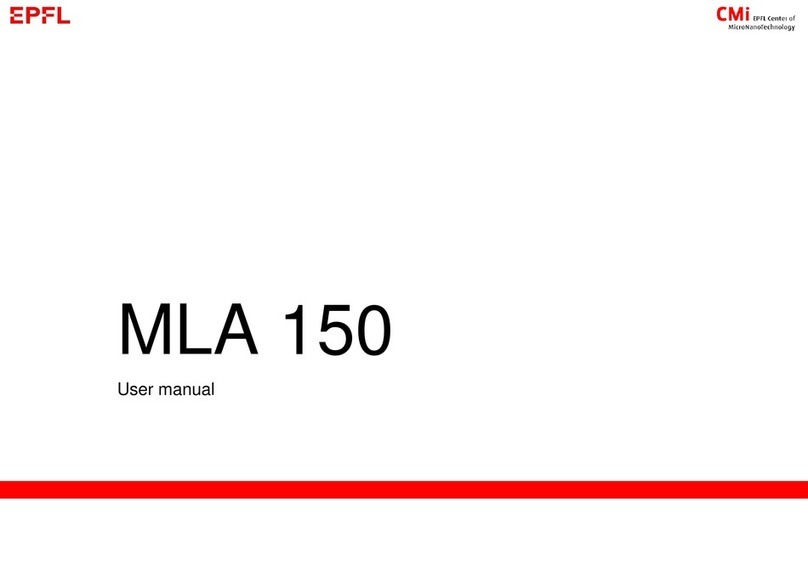
Heidelberg Engineering
Heidelberg Engineering MLA 150 user manual

Hettich
Hettich ROTANTA 460 S operating instructions
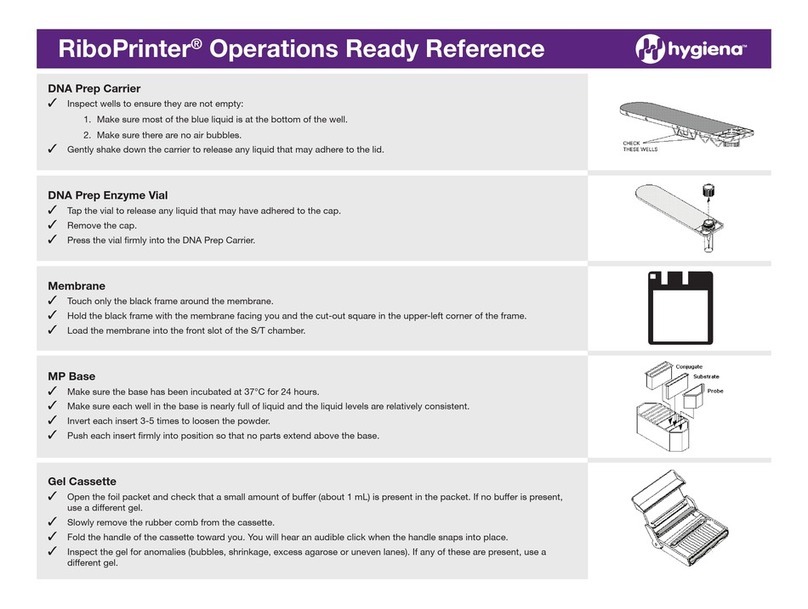
Hygiena
Hygiena RiboPrinter reference guide
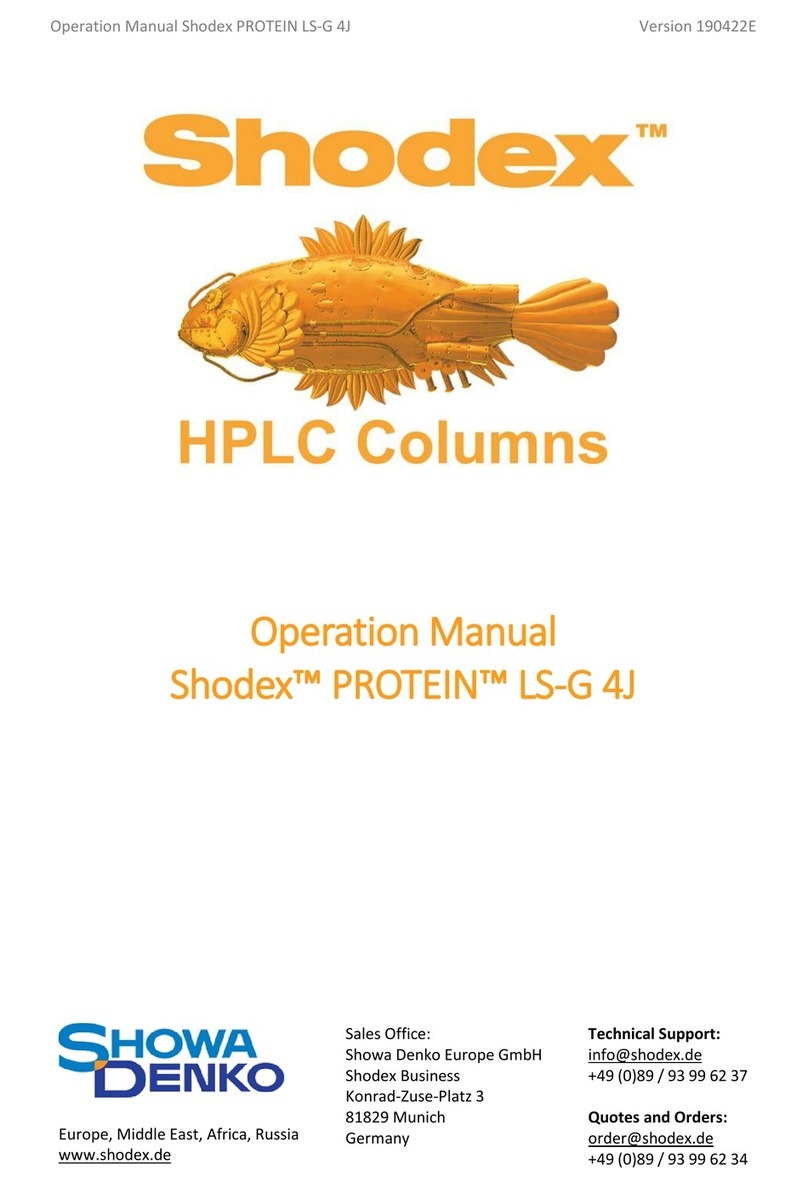
Showa Denko
Showa Denko Shodex PROTEIN LS-G 4J Operation manual

Oxford Instruments
Oxford Instruments Andor Marana-X quick start guide
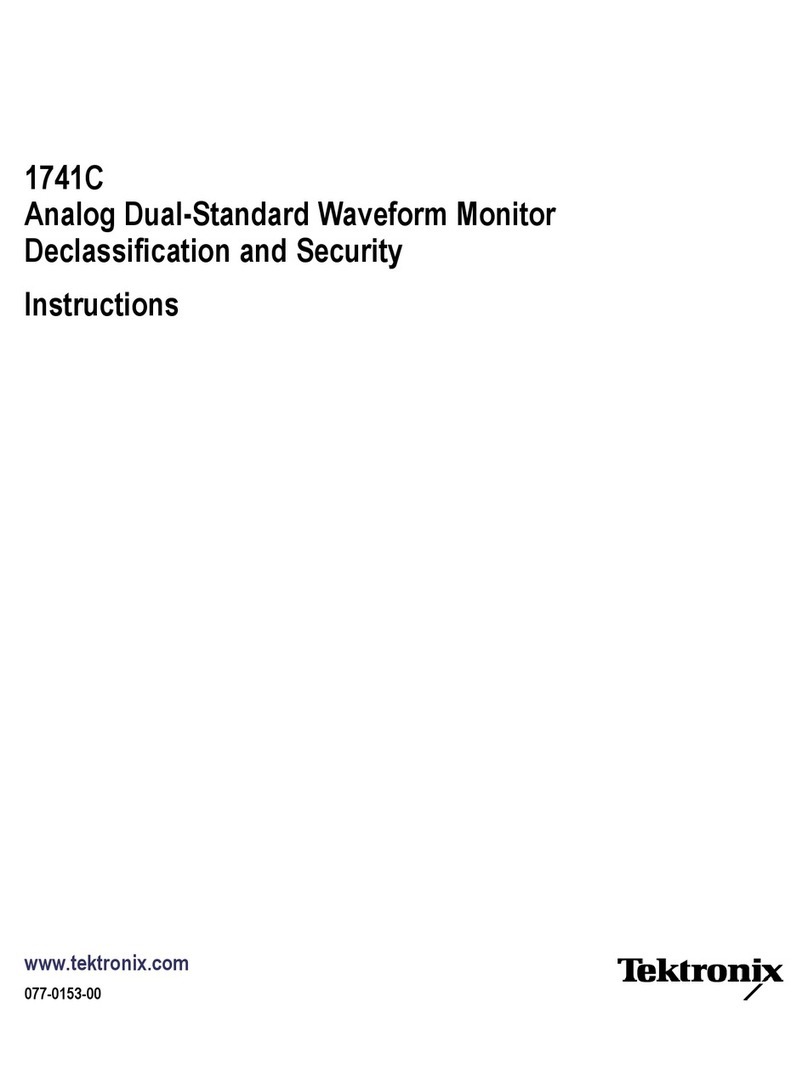
Tektronix
Tektronix 1741C Declassification and security instructions
